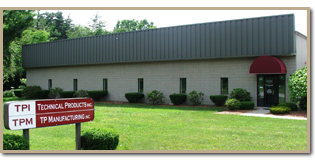Sales:
Burlytic Systems
A Technical Products, Inc. Company
50 Pratt’s Junction Road
Sterling, MA 01564
(P): 508-887-1944
Email:
You can also contact us through our web form by clicking here.
The Deburring Dilemma
Burrs are those leftover and undesirable bits of sharp metal which accumulate on the edges of machined parts after metal cutting, grinding, shearing or most other cutting operations. Burrs are usually the last thing that an engineer or machinist wants to worry about when he is designing a new part, trying to keep tolerances close and production rate high. As a result, the entire subject has been actively ignored. Burrs can be very painful, emotionally and physically.
It has been unfashionable to spend much time or money scientifically investigating burr removal. In reality it has been the machine operator who is usually left to solve the burr problem – and this usually means manual deburring. As a result, many project budgets do not even include funding for deburring. Lack of burr removal planning may result in a part that absorbs more time and money to deburr than it took to produce it in the first place.
Some engineers feel that as tool technology improves, the whole burr problem will disappear. As long as there are chips, there will be burrs. Even the latest single-crystal diamond cutters create burrs.
Some machine shops have moved up a deburring notch by using an abrasive tumbler, vibrator or blast machine, but the art and science of removing burrs is still very much a backwater in the torrent of improved metal cutting technology.
Over the years, man has devised many inventive and even entertaining ways to remove burrs. He scrapes them off, grinds them off, sands them, dissolves them with acid, wire brushes them, tumbles them, vibrates them, and blasts them with high-pressure abrasive streams. He has electrocuted the burrs in salt water, honed them off with abrasive-laced Silly Putty and, heaven help us, he has even incinerated them inside high-pressure gas-charged explosion vessels. Despite these heroic efforts, the final results often seem less than satisfying.
In our quieter moments we may wish for some mystical process where we might simply submerge our masterpiece in some enchanted fluid for a moment or two and, presto!, all the burrs are gone with the surfaces untouched. And while we’re at it, let’s wish that the surfaces get polished too. Sadly, there is no magical process yet, but in the meantime, we have the Burlytic® Deburring Process which comes closest to our wish.
The Burlytic® Process satisfies most of our wishes outlined about, but it won’t work well without a little intellectual and creative investment on your part. It can perform wonders, but if the basics are not well understood and adhered to, your learning curve can be long, expensive and painful. Our expertise and manuals will give you the jump-start you need to become a Burlytic® Processing expert.
Copyright© 2005-2010 Burlytic Systems A Technical Products, Inc. Company 50 Pratt’s Junction Road Sterling, MA 01564 (P): 508-887-1944


